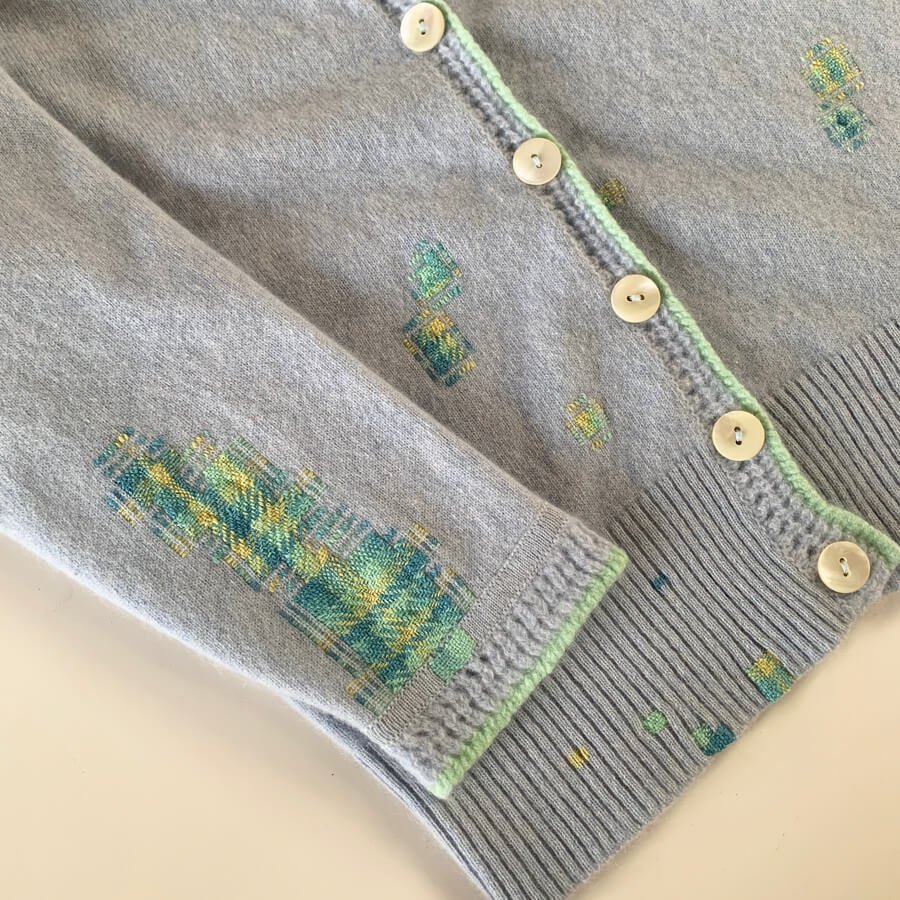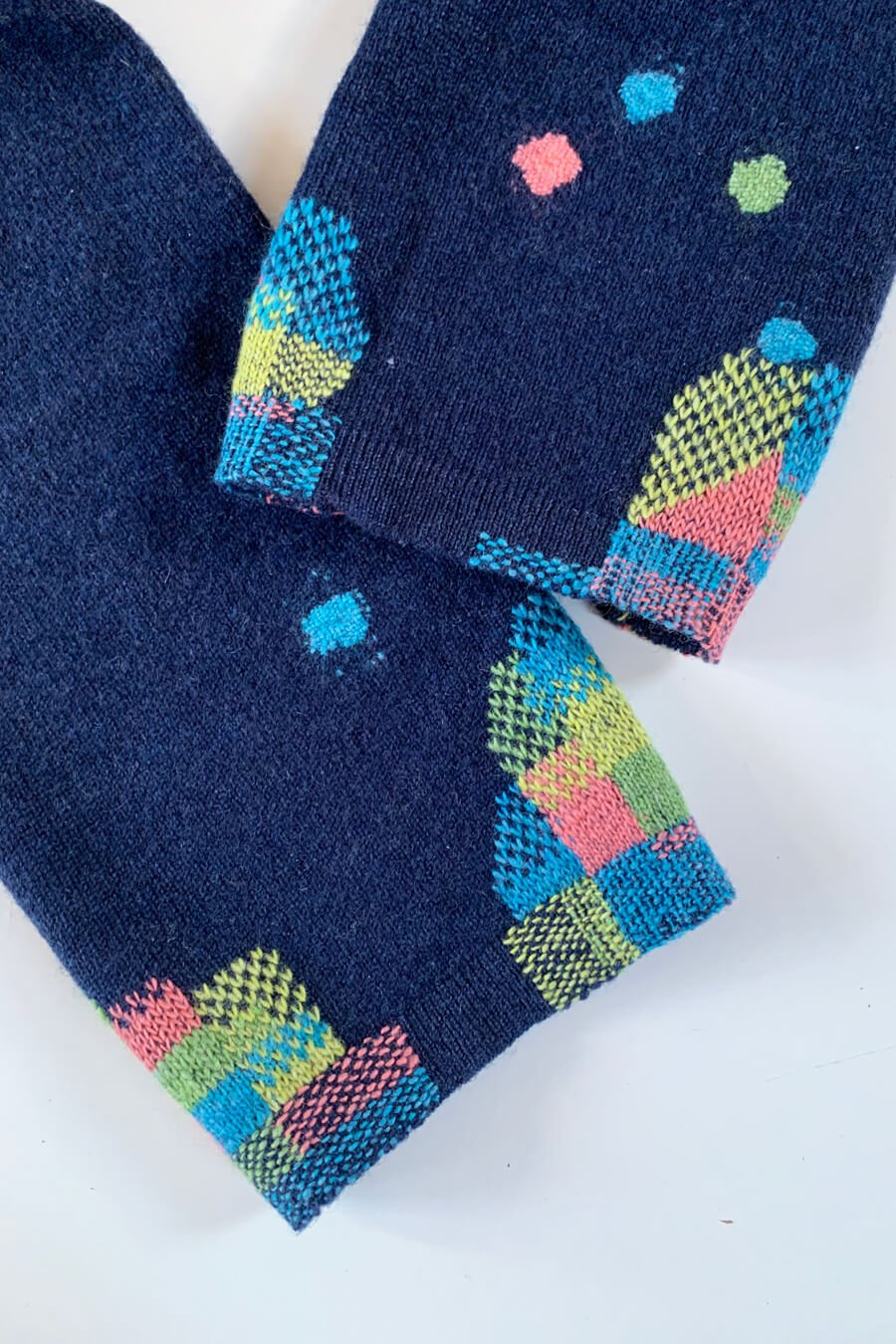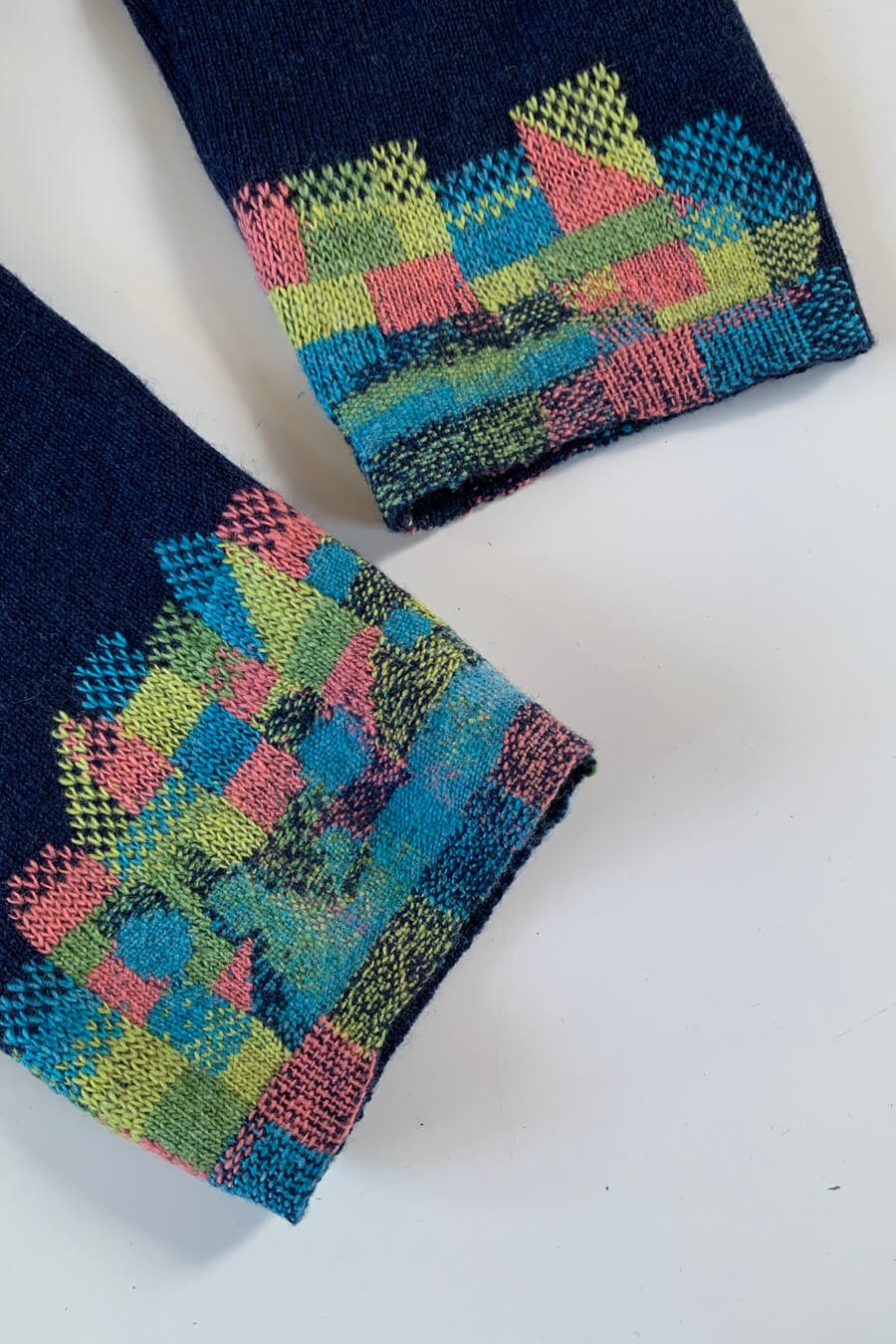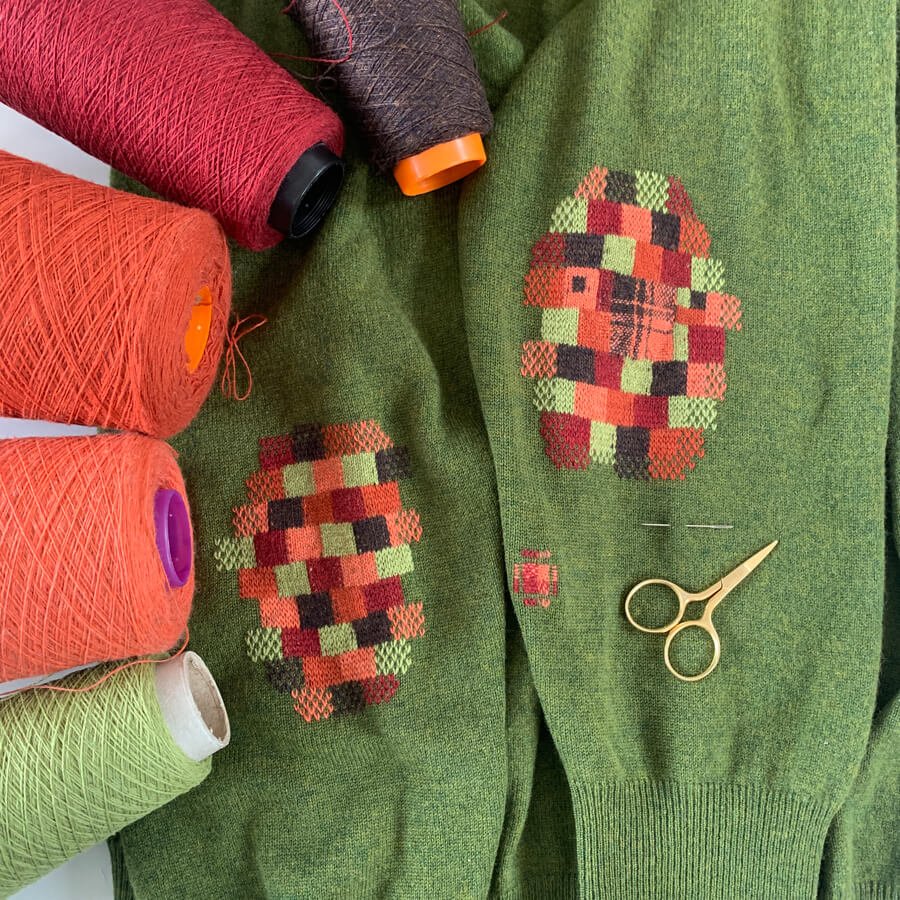Knitwear Repair- Your Questions Answered
Over the last year I’ve been answering some of your mending and knitwear repair questions in my newsletter. There have been some great ones, that don’t necessarily have a straightforward answer. So much of visible mending comes down to individual preference, taste and style I think something that should be embraced!
I wanted to share some of the questions I’ve discussed in my newsletter, in the hope they can help you with your own mending and decision making within that.
Darning or Swiss Darning? How do you decide which technique to use?
They’re both great techniques to be able to do when it comes to mending knitwear, and I regularly use them both. Swiss darning is excellent for reinforcing threadbare areas, so I use that for any piece of knitwear I can catch before a worn area turns into a hole. It can also be used for repairing holes, but this can be quite fiddly on fine knits, so I prefer to use that for slightly thicker fabrics rather than really fine ones.
There’s a bit of personal preference involved when it comes to choosing which technique to use. I generally prefer to darn larger holes, and I prefer to darn really fine knits, for the reason above. Sometimes it just depends on what mood I’m in and where my ideas take me!
The advantage of using swiss darning where you can, is that it keeps the stretch of the knitted fabric, which is definitely beneficial. The advantage of darning is that you can pretty much use it anywhere you like, and on any fabric type. I’ve seen great examples of darning on shoes and furniture.
How do you decide if something is beyond repair? Is there a point of no return?
I think this is quite an interesting question. Yes, I think some things are beyond repair- pieces so threadbare you would need to almost reconstruct them stitch by stitch. However, I think these questions will come down to you and how you feel about the garment, so here are some questions you can ask yourself that might help you decide:
How long will it take to repair?
Is it likely to need more repairs in the near future? Will the repairs significantly prolong the garments life?
Do I have time for the initial repairs and follow ups? Do I love it enough for that?
Knitwear repairs can be really time consuming, so if you decide it's not worth the potentially many days it could take to repair, what else could you do with it? Could the useable bits of it be cut up into patches for future repairs? Could you make something else out of it (lavender bags, hot water bottle covers, baby clothes, wrist warmers)? Can it be recycled? Could it be sent to a company who will upcycle it for you?
If it's a garment you really love and you like a challenge, it might be a fun project to make it last, and you’ll enjoy spending the time on it so you can keep wearing it! The example below is a much loved sweater of mine. I’ve spent days on this already, and I know it’ll need more attention in the future, but for me it’s worth it as it holds a lot of memories for me.
How do you match the weight of yarn to the garment you're repairing if you're not a knitter?
My advice is to judge it by eye (which is what I do) and not worry about it too much. You can always adjust your mending a bit (something I touch on in the Introduction to darning workshops) if it's not an exact match, which is very difficult to find anyway! The yarn you choose should be about as thick (or thin) as the fabric when it's flat. Wrapping a bit of the yarn around your needle, and picking up a strand of the knitted fabric with the needle is also a good way to see them side by side.
If I can't find an exact match, my preference is to opt for yarn that's finer rather than thicker, as I can always ply that up, or adjust my mending.
Repairing Merino Base Layers
I often get asked about repairing merino base layers. They're slightly more challenging as they're so fine, and I think it's that and material choice that throws people off.
If you can't find wool fine enough, then use something you can find! I've used silk in the example above, as it's a yarn I use for my knitwear. A single strange of embroidery thread would also work well (often it comes in a strand of 5-6 finer threads very loosely twisted together, so you can pull them apart easily). It won't be merino, but it will do the job, and that's the really important bit! Then just follow the darning instructions I have in my visible mending book. If you're struggling to see the stitches in detail, you might want to use a craft magnifying glass and have really good light.
If you prefer to keep your mending in wool, then my fine darning wool works well too. It's slightly thicker than merino base layers, and you'll need to adjust your darning slightly to accommodate that. You may only need to have half the amount of warp and weft threads you would normally have. This is what I do for my own merino base layer tops, and it's been working well so far!
How to remove a botched darn, or how to just work over the top of it?
If your first attempt at a mend doesn't turn out how you'd like it, or you find a garment with a poorly executed repair, you can of course take it out and start again. You never have to be stuck with something you don't like and wouldn't want to wear. I would carefully snip the unwanted darn out, making sure to only cut the threads of the repair so that you don't make the original hole any bigger. Then carefully remove the threads with your fingers and with the help of a needle.
If you think the original mend just needs a bit of improving, then maybe some embroidery over parts of it will do the trick to hide any areas you don't like. I generally wouldn't darn over something that's already there. especially if it's lumpy, or distorting the fabric, as you will make it lumpier. If I don't like something I generally prefer to take it out, unless it's just a small mistake, in which case I might choose to just embroider over it.
I included a chapter on embroidery in my book, showing my favourite stitches, as I fell in love with visible mending because I could include embroidery to make a feature of the repair.
I’ll continue to answer you knitwear repair questions in my newsletter. If you have a question you’d like me to discuss in it, please leave it in the comments. And of course, make sure you’re signed up to receive it!









